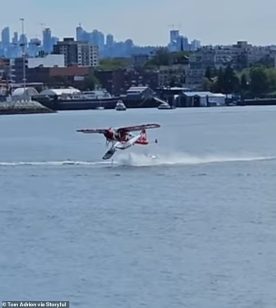
Last week’s collision between a Harbour Air de Havilland Canada DHC-2 Beaver and a small pleasure boat in Vancouver’s Coal Harbour is raising concerns over who has the right of way in this type of situation.. It is complicated.
There have been many interpretations and opinions put forth by armchair commentators from around the world. Some point out that a vessel on the water must yield to another one approaching from the right. That is according to maritime law, which is applicable to seaplanes while they are on the water. This is reinforced by CAR 602.19 (10): “No person shall conduct or attempt to conduct a take-off or landing in an aircraft until there is no apparent risk of collision with any aircraft, person, vessel, vehicle or structure in the take-off or landing path.” And it is further reinforced by CAR 602.20 (1): “Where an aircraft on the water has another aircraft or a vessel on its right, the pilot-in-command of the first-mentioned aircraft shall give way.”
Some point out that the area the takeoff was being conducted is designated for float planes, so the boat operator was to blame. However, it is only an advisory rather than a designated restricted or prohibited area.

Others point out that the sight line forward from the left seat of a Beaver on floats taking off is limited, particularly before it gets on step.
Then again, a publicly released audio recording from the control tower advising the pilot of an approaching watercraft was clear: “Caution for the westbound boat … takeoff northwest at your discretion.”
We think it safe to say that there will be a substantial investigation by the TSB, with resulting recommendations for changes in the way air and maritime traffic is handled on Vancouver’s busy waterfront.
